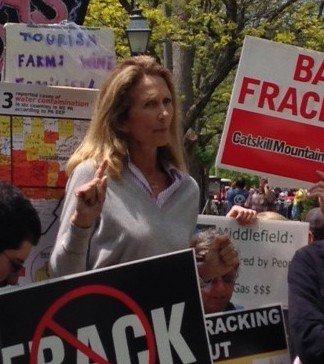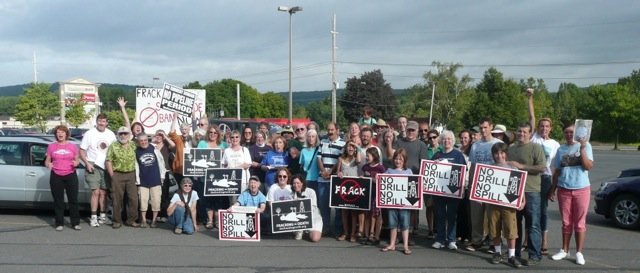-
Otsego 2000 views the environment as highly interconnected and interactive; agriculture, economics, land-use planning, town planning, and historic or cultural preservation all contribute to the environment and must be addressed in dealing with challenges to the environment.
While we believe growth and change are both desirable and inevitable, our task is to try to guide our environment – which includes not only Otsego Lake, but also the local towns, villages, hamlets, streets, and highways – along what we hope are more intelligent pathways. While Otsego Lake is the centerpiece, we are just as concerned with its surroundings, natural and human. All are inseparable. Otsego 2000’s environmental stewardship work focuses on protecting the Otsego region’s rural and agricultural landscapes from inappropriate development, sprawl, and large-scale industrialization that would negatively affect air, water, and soil quality, as well as disrupt its rural, agricultural character and quality of life.
-
Event Materials and Q&A from October 16 program at the Village Library of Cooperstown
-
We call for energy conservation to reduce reliance on fossil fuels. We strongly support solar energy development that is compatible with our agricultural resources and environment.
OTSEGO 2000 POSITION ON SOLAR AND RENEWABLE ENERGY
Adopted February 24, 2018Otsego 2000 is a non-profit organization dedicated to protecting the historic, environmental, cultural, and agricultural resources of Otsego County and the greater Otsego Lake region. We support and offer informed advocacy, intelligent planning, public education, and sustainable economic alternatives, all in service of the long-term economic well-being and the quality of life of our residents.
Climate change, driven in large part by fossil fuel use, is a significant threat to our region and way of life. We call for and support energy conservation and efficiency to reduce reliance on fossil fuels and the necessity for expanded fossil fuel infrastructure and delivery systems. In addition, we call for and support smart development of renewable energy sources to meet the goals adopted by New York State for greenhouse gas reductions.
We strongly support solar energy development compatible with our agricultural resources and environment, including community solar facilities for local benefit. We encourage commercial, residential, and agricultural property owners to shift to rooftop or freestanding solar arrays to reduce or eliminate fossil fuel use. We encourage eligible property owners to take advantage of financial incentives such as those offered by the New York State Energy Research Authority (NYSERDA) and applicable historic preservation tax credits in connection with such installations.
To this end, we support development of solar installations that:
Prioritize previously disturbed or degraded areas, such as landfills, brownfields, impervious surfaces.
Protect agricultural lands and offer co-location of agriculture with solar power installations.
Protect our historic, cultural, and scenic resources.
Maintain conserved lands, whether for ecological or agricultural purposes.
We also support residential, commercial and community development of geothermal, wind and other renewable energy sources, guided by similar considerations.
-
In 2008, Otsego 2000 began a long campaign to educate state and local leaders and citizens about the adverse and irreversible impacts of natural gas hydraulic fracturing, or fracking. Among the first statewide to raise the alarm, we felt strongly that the draft New York DEC guidelines governing shale gas extraction in Otsego County, and elsewhere in New York, posed unacceptable risks to our water, environment, agriculture, health and infrastructure. They failed to safeguard our drinking water supplies and air quality, did not take into account considerable seismic activity, did not protect the fragile historic heritage of our communities, and did not provide the means for local and county governments to protect existing infrastructure from the onslaught of heavy truck traffic, the upgrade of emergency response training, or the effective treatment and disposal of fracking wastewater. Most alarmingly, there had been no comprehensive study of the cumulative impacts of shale gas extraction either on the environment or on human and animal health. Until such data are available, and until shale gas extraction can be proven harmless to the climate, environment and human and animal health, Otsego 2000 supports a ban on hydraulic fracturing and related activity – waste disposal/storage, transport, etc. -- in New York State.
To this end, Otsego 2000 led the State in organizing communities to enact bans on heavy industry, including shale gas extraction, and push the State for stringent regulations, organizing neighborhood groups and supporting Home Rule -- the right of local communities to determine their community character through control over land-use decisions. Most recently, for example, Otsego 2000 established the Middlefield Legal Defense Fund to hold monies that were contributed to assist the Town of Middlefield in its lawsuit, Cooperstown Holstein vs. Town of Middlefield. That lawsuit ended with a ruling by the New York State Court of Appeals, in June 2014, upholding the town’s right of Home Rule. Subsequently, over 100 towns and villages in New York have banned fracking. Otsego 2000 also pioneered the highly successful comment letter template system which enabled ordinary concerned citizens to voice their concerns quickly and efficiently during often tight public comment periods. Working with local experts, 20 different comment letters were drafted for people to adapt and send. This system, also adopted by New Yorkers Against Fracking, Catskill Mountain Keeper and other organizations, led to an exponential rise in the number of public comments received, from 1,000 on the first draft SGEIS to over 200,000 on the revised draft SGEIS. It also was a highly effective educational tool as the details in the draft letters were circulated to a wide audience. At the same time, organizing such an overwhelming response to the draft SGEIS bought time for the ongoing environmental and health impact studies in other states to begin to show results.
On December 17, 2014, the State announced that a ban would be instituted based on the emerging science and impacts in states where fracking was permitted. In June 2015, in a Findings Statement on high-volume hydrofracking (HVHF), the NYS DEC announced that it had found no feasible or prudent alternatives that would adequately avoid or minimize adverse environmental impacts, and that would address the scientific uncertainties and risks to public health from this activity. To that end, the NYS DEC recommended a “No-Action alternative,” prohibiting HVHF in New York State. The statement noted the challenges in protecting special places, such as Otsego County's nearly 35,000 acres of National Register or National Register-eligible historic districts, from negative impacts associated with fracking. Despite these significant achievements, Otsego 2000’s campaign against this method of shale gas extraction and the transport pipelines and compressor stations that may crisscross the state will continue until a safe alternative is discovered.




